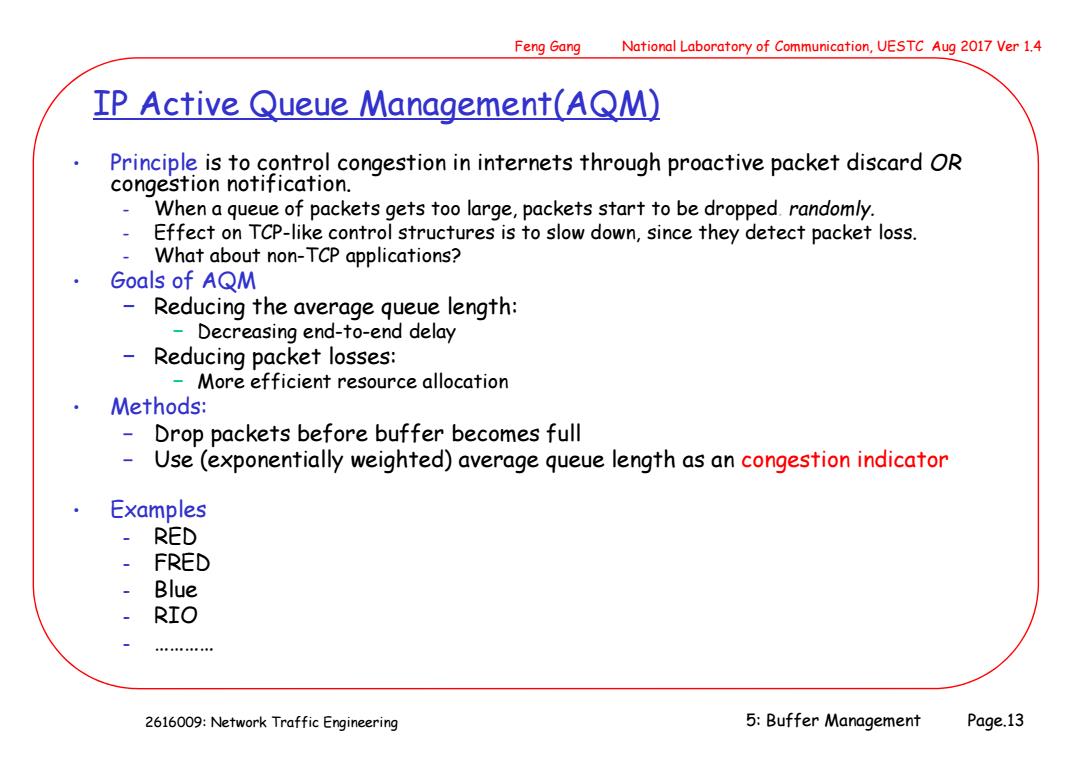正在加载图片...

Feng Gang National Laboratory of Communication,UESTC Aug 2017 Ver 1.4 IP Active Queue Management(AQM) Principle is to control congestion in internets through proactive packet discard OR congestion notification. When a queue of packets gets too large,packets start to be dropped.randomly. Effect on TCP-like control structures is to slow down,since they detect packet loss. What about non-TCP applications? Goals of AQM Reducing the average queue length: - Decreasing end-to-end delay Reducing packet losses: More efficient resource allocation 。 Methods: Drop packets before buffer becomes full Use(exponentially weighted)average queue length as an congestion indicator Examples RED FRED Blue RIO 2616009:Network Traffic Engineering 5:Buffer Management Page.132616009: Network Traffic Engineering Feng Gang National Laboratory of Communication, UESTC Aug 2017 Ver 1.4 5: Buffer Management Page.13 IP Active Queue Management(AQM) • Principle is to control congestion in internets through proactive packet discard OR congestion notification. - When a queue of packets gets too large, packets start to be dropped. randomly. - Effect on TCP-like control structures is to slow down, since they detect packet loss. - What about non-TCP applications? • Goals of AQM − Reducing the average queue length: − Decreasing end-to-end delay − Reducing packet losses: − More efficient resource allocation • Methods: − Drop packets before buffer becomes full − Use (exponentially weighted) average queue length as an congestion indicator • Examples - RED - FRED - Blue - RIO - …………